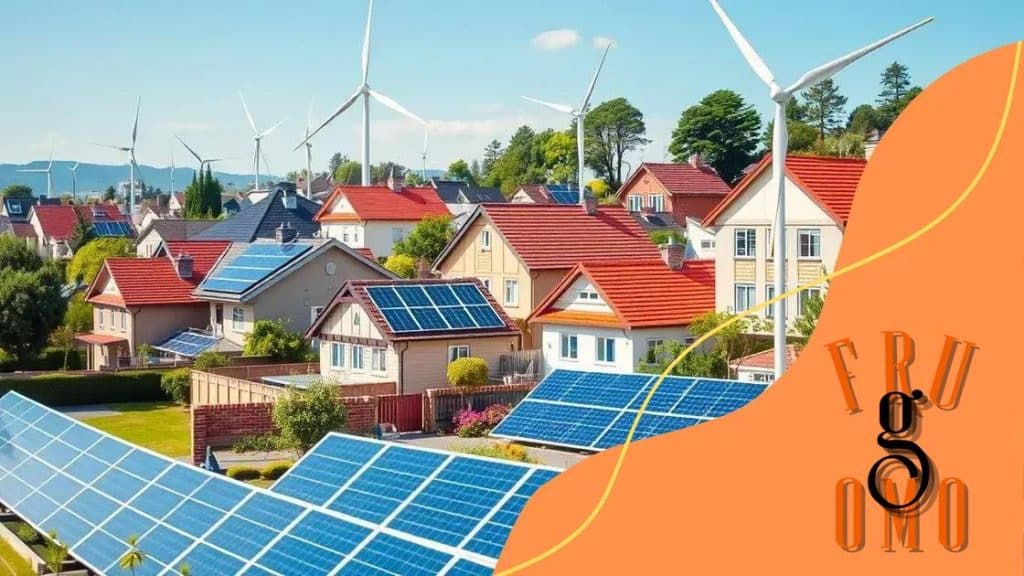Renewable energy incentives in public benefits: A guide

Renewable energy incentives provide financial benefits such as tax credits and grants, encouraging individuals and businesses to adopt sustainable energy solutions while promoting environmental responsibility.
Renewable energy incentives in public benefits are changing the way we approach sustainable practices. Have you ever wondered how these incentives can impact your community funding and environmental goals? Let’s dive into this important topic.
Understanding renewable energy incentives
Understanding renewable energy incentives is crucial for promoting sustainable practices and reducing our environmental footprint. These incentives can take various forms, often aimed at encouraging individuals and businesses to adopt cleaner energy sources.
Types of Renewable Energy Incentives
There are several types of incentives available, each designed to support the transition to renewable energy.
- Tax credits: Offering deductions on your tax bill, these credits make renewable investments more affordable.
- Grants: Free financial assistance for renewable energy projects can help cover upfront costs.
- Rebates: Instant savings when purchasing renewable energy equipment encourage consumers to switch.
Moreover, these incentives can vary by state and local jurisdiction, making it important to investigate what is available in your area. Different programs target specific technologies, such as solar, wind, or geothermal energy.
The Benefits of Understanding These Incentives
Grasping how renewable energy incentives work can lead to substantial financial benefits. It allows homeowners and businesses to maximize their savings on energy costs while contributing to environmental conservation. Additionally, understanding these programs can drive more widespread adoption, ultimately leading to a more sustainable future.
As you consider renewable energy options, think about how incentives can affect your choices. By delving into the details, you can make informed decisions that align with both your financial goals and environmental values.
Types of public benefits
When discussing types of public benefits related to renewable energy incentives, it’s essential to recognize the variety of programs available to support communities and individuals. These benefits can significantly impact economic development while promoting cleaner energy solutions for the environment.
Financial Benefits
The financial aspect is one of the most compelling reasons to explore public benefits. Through the various incentives, participants can receive:
- Subsidies for renewable energy systems.
- Reduced energy bills due to lower rates for users of green technologies.
- Financial assistance for initial investment costs.
These incentives are designed to make renewable energy options more accessible, helping to encourage widespread adoption.
Environmental Benefits
The environmental benefits of public support for renewable energy initiatives are profound. By implementing these programs, communities can:
- Reduce greenhouse gas emissions, contributing to global efforts against climate change.
- Improve air and water quality, resulting in healthier living conditions.
- Enhance biodiversity by promoting sustainable practices.
Understanding these benefits can motivate more people to engage in renewable energy projects, leading to smarter choices that prioritize sustainability.
As awareness grows, communities benefit not only economically but also socially, promoting a collective responsibility toward the environment. The support of public benefits amplifies these efforts, making it easier for everyone to participate in creating a greener future.
How incentives promote sustainability

Incentives play a crucial role in promoting sustainability across various sectors, particularly within renewable energy. By offering financial rewards and support, these incentives encourage individuals and organizations to adopt environmentally friendly practices.
Encouraging Renewable Energy Adoption
One of the primary ways incentives work is by reducing the financial barriers to adopting renewable energy solutions. When people can save money through tax breaks or grants, they are more likely to install solar panels or invest in wind energy.
- Tax credits can significantly reduce the upfront cost of renewable energy systems.
- Subsidies can help cover installation expenses, making green energy accessible to more households.
- Rebates provide immediate savings, encouraging customers to choose sustainable options.
These incentives create a ripple effect, leading to increased demand for clean energy technologies. More households using renewable energy contributes to a decrease in fossil fuel reliance, which is vital for reducing greenhouse gas emissions.
Building Sustainable Communities
Additionally, incentives foster sustainable communities by supporting local projects. Public funds invested in renewable energy can lead to job creation and economic growth.
- Local job opportunities arise in the installation and maintenance of renewable systems.
- Funding helps municipalities develop infrastructure for sustainable practices.
- Community programs increase awareness and participation in sustainability initiatives.
As communities become more engaged, the collective impact can be substantial. This commitment not only benefits the environment but also enhances community connections and resilience.
Ultimately, the synergy created between incentives and sustainable practices bolsters the effort to combat climate change. By promoting a culture of sustainability, these incentives pave the way for a greener future for everyone.
The role of government in renewable energy
The role of government in promoting renewable energy is essential for driving forward clean energy initiatives. Through various policies and programs, governments at all levels encourage the development and adoption of sustainable practices.
Creating Supportive Policies
One of the most significant ways governments contribute is by creating supportive policies. These may include:
- Implementing tax incentives for individuals and businesses investing in renewable technologies.
- Establishing renewable portfolio standards, requiring utilities to obtain a certain percentage of energy from renewable sources.
- Providing grants and funding for research and development in renewable energy technologies.
These policies lower the barriers for adopting renewable energy, making it more attractive for everyone, from homeowners to large corporations.
Infrastructure Development
Governments also play a vital role in developing the necessary infrastructure for renewable energy. This includes investments in:
- Building solar power plants and wind farms.
- Upgrading power grids to handle distributed energy generation.
- Facilitating research to improve energy storage methods, crucial for balancing energy supply and demand.
By ensuring that the infrastructure can support renewable energy initiatives, governments help drive efficiency and encourage further investments.
In addition, government programs raise public awareness about the importance of renewable energy. Educational campaigns inform citizens about available incentives and how they can contribute to sustainability. These initiatives encourage community engagement and shape public opinion about the transition to renewable energy.
Ultimately, the government’s involvement in renewable energy is a key factor in fostering innovation, reducing reliance on fossil fuels, and promoting a sustainable future for all.
Challenges in implementing incentives
Implementing incentives for renewable energy can be a powerful tool for promoting sustainability. However, there are several challenges that can hinder their effectiveness and widespread adoption.
Funding Issues
One significant challenge is the availability of funding. Governments and organizations may struggle to allocate sufficient resources to support incentive programs. This can lead to:
- Inadequate funding for grants and subsidies.
- Reduced outreach efforts to inform the public about available incentives.
- Limited capacity to monitor and evaluate program effectiveness.
Without proper funding, these incentives might not reach their intended audience, limiting their impact on encouraging renewable energy adoption.
Public Awareness and Participation
Another challenge is the general public’s awareness of available incentives. Many people do not know about the programs or how to take advantage of them. Increasing public engagement in renewable energy can involve:
- Educational campaigns to explain the benefits of renewable energy and how incentives work.
- Efforts to simplify the application processes for incentives.
- Collaboration with community organizations to reach underrepresented groups.
Raising awareness can significantly improve participation and maximize the incentives’ benefits. Moreover, the complexity of incentive programs can deter individuals and businesses from applying. Simplifying the processes and providing clear information can encourage more participation.
Lastly, political and regulatory challenges can also play a role in the implementation of incentives. Changes in government leadership can lead to shifts in priorities and funding for renewable energy programs. Consistent support and stable policies are essential for ensuring successful implementation and long-term sustainability.
Incentives for renewable energy are crucial in the fight against climate change and in promoting sustainability. While challenges exist in implementing these programs, overcoming them can lead to significant benefits for individuals, communities, and the environment. By increasing public awareness, providing financial support, and ensuring consistent government policies, we can create a greener future. Together, we can harness the power of renewable energy to build a sustainable world for generations to come.
FAQ – Frequently Asked Questions about Renewable Energy Incentives
What are renewable energy incentives?
Renewable energy incentives are programs or policies designed to encourage the adoption of renewable energy sources through financial benefits, such as tax credits and grants.
How do these incentives help individuals?
These incentives reduce the upfront costs of renewable energy systems, making it more affordable for individuals to invest in solar panels, wind turbines, and other clean energy technologies.
What challenges exist in implementing these incentives?
Challenges include funding issues, lack of public awareness, and the complexity of application processes, which can discourage participation in incentive programs.
What role does the government play in promoting renewable energy?
The government creates supportive policies, provides funding, and develops necessary infrastructure to facilitate the growth of renewable energy projects and programs.





